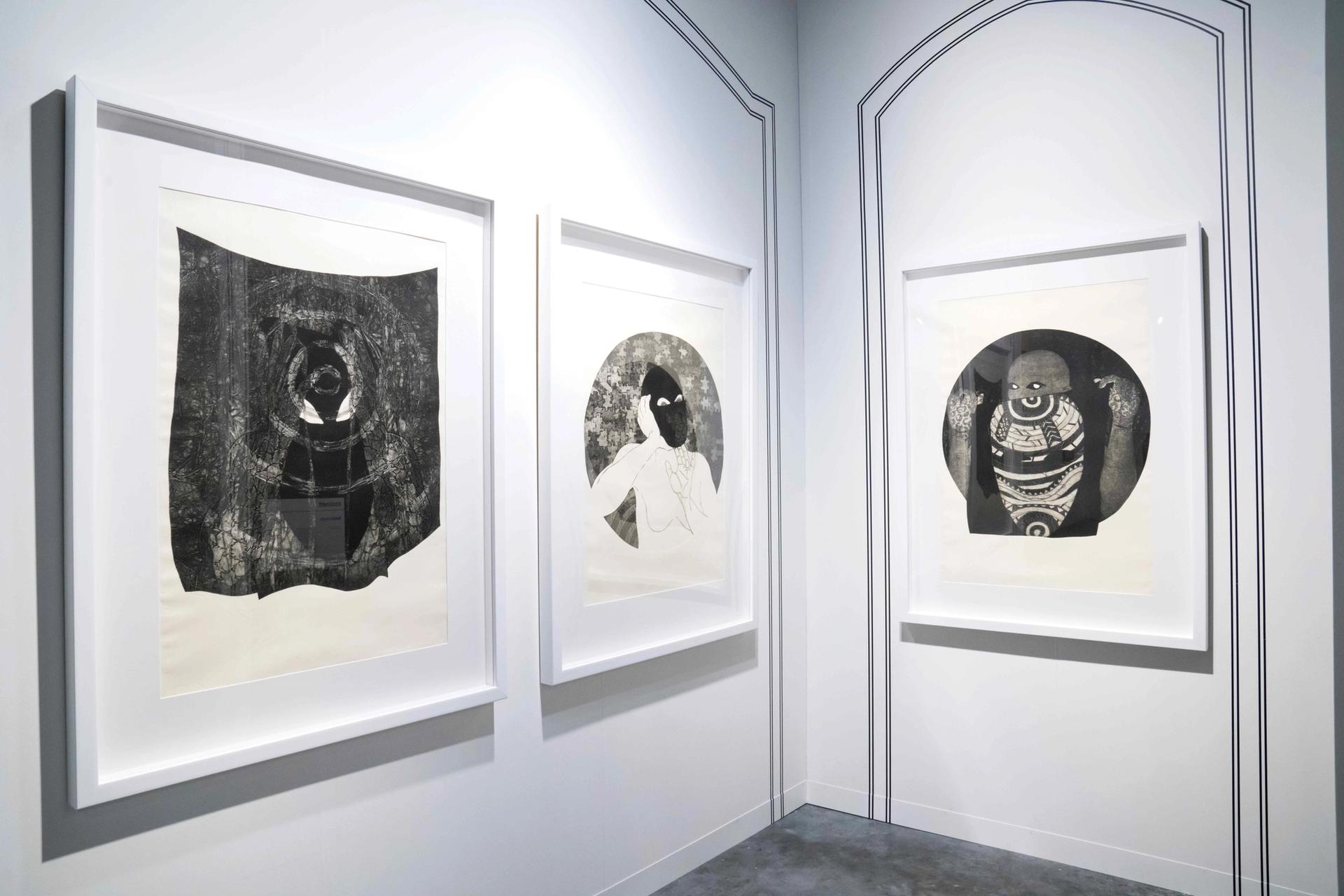At the first VIP fair opening of the week, visitors to Untitled Art on Monday were asked to hand over cash to be stamped with messages of support for freedom of expression in Cuba. The project, El billetaje quemando la calle (Bills Burning the Street), was first conceived in June by the artist Hamlet Lavastida, who was arrested before it could be executed and held in prison for three months. Under constraints on artistic expression ushered in by a sweeping decree that went into effect in 2018, authorities deemed his idea of stamping currency with symbols of dissent to be akin to planning to commit a crime.
Now living in exile in Europe, Lavastida joined the realisation of the performance via Zoom, as fellow Cuban and Cuban American artists Coco Fusco, Janet Batet and Marco Castillo stamped visitors’ bills in Miami.
“It was important we bring this piece here since a lot of people in Florida follow the situation in Cuba very closely,” Fusco says (63% of Cuban immigrants in the US live in the greater Miami area). “Given the level of repression in the last year, there’s a growing concern that reform is not an option, and what’s needed is a change of regime and transition.”
Discontent with the Cuban president Miguel Diaz-Canel’s administration reached fever pitch over the summer. In July, thousands of Cubans on the island took to the streets in one of the largest protests the country has seen since Fidel Castro’s 1959 revolution. The demonstrations built on rallying calls for a freer Cuba led by artists such as Lavastida and Luis Manuel Otero Alcántara, who have been arrested numerous times for protesting against the controversial censorship law, Decree 349. These protests were followed by government crackdowns and intimidation campaigns.
For Cuban and Cuban American artists, the timing of the protests and government suppression has given greater weight to both Miami Art Week and the 14th edition of the Havana Biennial, which opened on 21 November. Hundreds of Cuban cultural workers signed an open letter calling for a boycott of the biennial, which has long been a popular destination on the global exhibitions calendar. “This is not the time to be doing cultural tourism in Cuba,” says Fusco, one of the signatories.
For Christian Gundín García, the director of El Apartamento, the only Havana-based gallery at Untitled, showing contemporary Cuban artists in Miami is especially important in the current climate. “There’s a lot of great artists doing great work, but because of the political tension and freedom of expression issues, the scene is very small, plus there’s no domestic market,” he says. His stand includes an abstract work by Diana Fonseca created with chips of paint peeled off Havana building façades and a sculpture by Reynier Leyva Novo, The Weight of Death (2016), made from brass bullets melted down and cast into weights.
At the New Art Dealers Alliance's (Nada) Miami fair, the Mexico-based China Art Objects Galleries is exhibiting work by four Cuban artists: Claribel Calderius, Marco Castillo, James Bonachea and Ernesto García. For co-owner Tuesday Yates, showing pieces in Miami that might have provoked censorship if they were exhibited in Havana underlines the dissonance of staging a major biennial amid nationwide protests and repression campaigns.
“Cuba has a long history of producing and supporting artists, until the artists have something to say, then they put them in jail,” she says. “How do you have an art biennial without freedom of speech?”
The artist Tania Bruguera—who has been repeatedly arrested by Cuban authorities for performances and protests criticising the government and, in October, agreed to leave the country in exchange for the release of 25 prisoners, including Lavastida—said 12 artists dropped out of the biennial despite pressure from its organisers. The biennial’s opening, she says, “had no impact at all”.
The biennial’s organisers did not respond to a request for comment but, according to the state-sponsored English-language publication Prensa Latina, more than 1,000 artists and intellectuals worldwide have signed a declaration of support. The event’s Facebook page shows a series of events at the Museo Nacional de Bellas Artes, Centro de Arte Contemporáneo Wifredo Lam and elsewhere. The programme reportedly includes an exhibition in tribute to the late Cuban artists Reinaldo Lopez and Belkis Ayón.

Works by the late artist Belkis Ayón are being shown by dealer David Castillo at Art Basel in Miami Beach, while a tribute is reportedly planned at the Havana Biennial Photo: Eric Thayer
Rising profile
The Miami-based Cuban American gallerist David Castillo works with Ayón’s estate and is showing her work in the Kabinett sector of Art Basel in Miami Beach (ABMB). Her rising profile beyond Cuban and Latin American art circles was bolstered this month with the opening of a major survey at the Museo Reina Sofía in Madrid. “It’s always been especially important to me, not just in this moment but in general, to show Cuban art because Latin American art as a whole and Cuban art especially has so long been a sub-category,” Castillo says.
Being able to show abroad is essential to the richness of Cuban contemporary art, according to the Miami-based gallerist Fredric Snitzer, whose stand at ABMB features as its centrepiece a large painting by the Cuban-born artist Enrique Martinez Celaya of an ominous inferno in the middle of a dark sea. “For as long as I can remember, Cuba has been a repressive country,” he says. “It is important to give [Cuban artists] a platform in a free society.”


